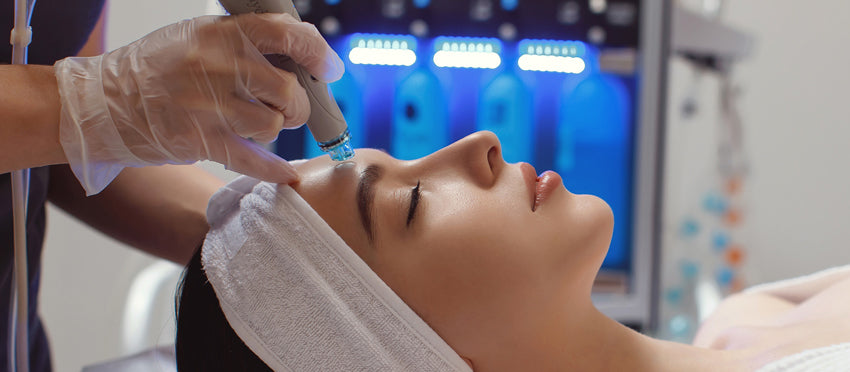Facial treatments have evolved significantly over the years, and among the latest advancements, the Hydrafacial has gained immense popularity. This non-invasive skincare procedure is often advertised as an effective way to deeply cleanse the skin, remove impurities, and hydrate simultaneously. But does a Hydrafacial truly cleanse pores deeply, or is it just another beauty trend? In this article, we will delve into the science behind Hydrafacial technology, how it affects pores, and whether it delivers on its promises.
For individuals seeking HydraFacial in Dubai, this treatment is widely available in aesthetic clinics and dermatology centers. Given Dubai’s hot and humid climate, where pollutants and excess sebum accumulation are common skin concerns, many residents turn to Hydrafacial to maintain clear and refreshed skin.
Understanding the Hydrafacial Process
A Hydrafacial is a multi-step treatment that combines cleansing, exfoliation, extraction, hydration, and antioxidant protection. Unlike traditional facials, which involve manual extractions and exfoliation, a Hydrafacial employs a specialized device that uses vortex-fusion technology to deeply cleanse the skin. This process helps to remove dirt, oil, and dead skin cells while infusing the skin with nourishing serums.
How Hydrafacial Works on Pores
The key selling point of a Hydrafacial is its ability to deep-cleanse the pores using a patented Vortex-Fusion system. This method involves:
- Cleansing and Exfoliation – The first step uses a gentle exfoliating serum and a spinning tip to remove dead skin cells and loosen debris from the skin’s surface.
- Acid Peel – A mild chemical peel containing glycolic and salicylic acids is applied to break down impurities and clear clogged pores without irritation.
- Extraction – Instead of manual extraction, which can be painful, the Hydrafacial device utilizes vacuum suction to extract blackheads, whiteheads, and other impurities from the pores.
- Hydration and Serum Infusion – Once the skin is cleansed, nourishing serums containing antioxidants, peptides, and hyaluronic acid are infused into the skin to restore moisture and elasticity.
Does a Hydrafacial Truly Deep Clean Pores?
Pores become clogged due to excess sebum, dead skin cells, pollution, and makeup residue. If not properly cleaned, clogged pores can lead to acne, blackheads, and dull skin. The Hydrafacial’s advanced technology is designed to target these concerns effectively.
- Suction Power for Deep Extraction: The vacuum suction used in the extraction step is more efficient than manual extraction methods. It effectively removes trapped dirt and oil without causing inflammation.
- Chemical Peels for Gentle Debris Removal: The application of glycolic and salicylic acids helps to dissolve impurities deep within the pores, preventing congestion.
- Hydration for Skin Balance: Unlike harsh treatments that strip the skin of its natural oils, a Hydrafacial replenishes moisture, keeping the skin hydrated and reducing excess sebum production.
Scientific studies and dermatologists confirm that Hydrafacial treatments improve skin texture and clarity by effectively removing buildup from the pores. However, the depth of cleansing varies depending on individual skin type and conditions.
How Often Should You Get a Hydrafacial?
To maintain clear and healthy skin, dermatologists recommend undergoing a Hydrafacial treatment once a month. However, for individuals with excessively clogged pores or acne-prone skin, more frequent sessions may be beneficial initially.
Hydrafacial vs. Other Pore-Cleansing Treatments
While the Hydrafacial is highly effective, it is not the only method available for deep pore cleansing. Here’s how it compares to other treatments:
- Traditional Facials: Regular facials can help with cleansing but often involve manual extractions, which can cause redness and irritation.
- Microdermabrasion: This treatment exfoliates the skin’s surface but does not provide the same level of hydration and serum infusion as a Hydrafacial.
- Chemical Peels: These can penetrate deeply into the skin, but they may cause peeling and sensitivity, unlike the Hydrafacial’s gentle approach.
- Laser Treatments: While effective for acne and scarring, laser treatments do not provide the same instant hydration and exfoliation benefits as a Hydrafacial.
Can Hydrafacial Replace Your Skincare Routine?
Although a Hydrafacial is an excellent treatment for deep cleansing, it does not replace a proper skincare routine. Daily cleansing, exfoliation, and hydration are still essential for maintaining pore health. Incorporating products with ingredients like salicylic acid and niacinamide can help prolong the benefits of the Hydrafacial.
Potential Limitations of Hydrafacial
Despite its benefits, a Hydrafacial may not be suitable for everyone. Some limitations include:
- Not a Cure for Severe Acne: While it helps in unclogging pores and improving skin texture, those with severe acne may require additional medical treatments.
- Temporary Results: Since the skin naturally produces oil and accumulates debris, regular maintenance treatments are necessary.
- Mild Sensitivity Post-Treatment: Some individuals may experience slight redness or sensitivity, which typically subsides within a few hours.
Final Verdict:
The Hydrafacial is an advanced skincare treatment that effectively removes dirt, oil, and impurities from pores while hydrating and nourishing the skin. Its unique Vortex-Fusion technology allows for deeper cleansing than traditional facials, making it a preferred choice for individuals seeking clear and radiant skin. However, for long-term results, consistent skincare practices and periodic treatments are essential.
If you are considering a Hydrafacial, consulting a dermatologist can help determine whether this treatment aligns with your skin type and goals. With regular sessions and a balanced skincare regimen, the Hydrafacial can indeed be a powerful tool for maintaining deep-clean pores and a healthy complexion.






Comments